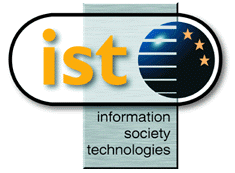Context

We are on the brink of a new generation of World Wide Web (WWW) which, in his recent book Weaving the Web, Tim Berners-Lee calls the Semantic Web. Unlike the existing WWW, where data is primarily intended for human consumption, the Semantic Web will provide data that is also machine processable. This will enable a wide range of intelligent services such as information brokers, search agents, information filters etc., a process that Berners-Lee describes as "Bringing the Web to its full potential". The importance of research in this area is indicated by the recently announced DAML initiative in the USA, under whose aegis projects aimed at developing the Semantic Web will receive DARPA funding totalling $70 million.
The development of ontologies will be central to this effort. Ontologies are meta data, providing a controlled vocabulary of terms, each with an explicitly defined and machine processable semantics. By defining shared and common domain theories, ontologies help both people and machines to communicate more effectively. They will therefore have a crucial role in enabling content-based access, interoperability and communication across the Web, providing it with a qualitatively new level of service: the Semantic Web. Examples of the use of ontologies to support content-based access and interoperability can already be seen in e.g., the American SHOE project (in which HTML is being extended with ontology based semantic markup codes) and the European IST-project ON-TO-KNOWLEDGE (in which ontologies are being used to facilitate access to large intranets).
The Semantic Web will also be crucial to the development of Web applications such as e-commerce, providing users with much more sophisticated searching and browsing capabilities as well as support from intelligent agents such as shopbots (shopping "robots" that access vendor Web sites, compare prices etc.). Examples of the use of ontologies/taxonomies to support searching and browsing can already be seen at e.g., Yahoo Shopping and amazon.com.
Aim
The importance of ontologies to the Semantic Web has prompted the development of schema extensions to existing Web standard languages: XML has been extended to give XML-Schema (XMLS), while RDF has been extended to give RDF-Schema (RDFS). However, the language primitives provided by these standards are extremely basic when compared with those typically provided by ontology languages developed within the Knowledge Representation (KR) community, and efforts are already underway to develop ontology extensions of these standards. The aim of the project is to develop the infrastructure required for the large-scale deployment of ontologies as the foundation for the Semantic Web. This will involve not only the establishment of a Web standard ontology language, but also the parallel development of the ontological engineering technology that will be required in order to "bring the web to its full potential".


